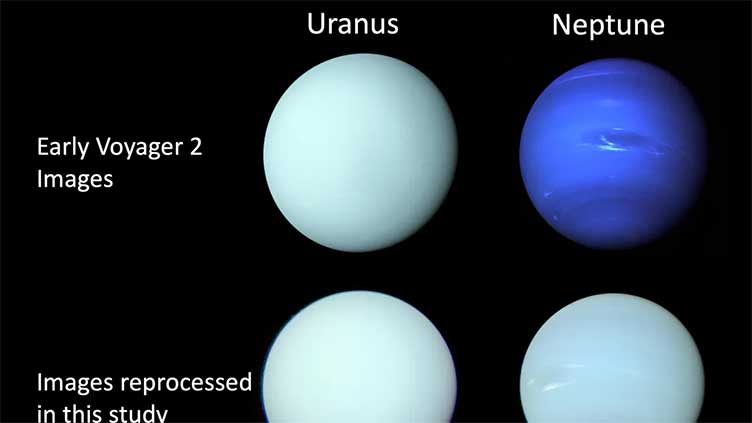Uranus and Neptune: The true colors of ice giants revealed

Technology
Study challenges longstanding belief about their colours
(Web Desk) - Recent research has unveiled an intriguing revelation about the ice giants Uranus and Neptune, challenging a longstanding belief about their colors.
Contrary to popular perception, the two planets share a similar pale blue hue, with Neptune being only marginally bluer.
This discovery, led by Professor Patrick Irwin from the University of Oxford, refutes the vivid images from NASA’s Voyager 2 flybys in the 1980s that painted Neptune as a deep blue — a result of image contrast enhancement rather than the true color of the planet.
The Color of Ice Giants
The coloration of Uranus and Neptune is attributed to the high levels of methane in their atmospheres.
Methane absorbs green and red light, rendering the planets their blue appearance.
This study used data from the Hubble Space Telescope and observations at the Very Large Telescope in Chile to determine the truest colors of the planets.
The images often recorded by spacecraft are highly processed, distorting the original hues.
Seasonal Color Changes of Uranus
Another facet of this research delved into the seasonal color changes of Uranus. Uranus, in its summer and winter seasons, appears greener.
This phenomenon is ascribed to lower methane levels over the poles and a haze of frozen methane particles that scatter light, reflecting more green and red wavelengths.
The planet’s unique orbit and polar latitudes contribute to its overall reflectivity, influencing the color changes.
Call for Further Exploration
Despite these fascinating findings, many questions about these planets remain unanswered.
Professor Irwin advocates for a joint mission by Nasa and the European Space Agency to send a spacecraft to the ice giants for an in-depth study.
This exploration would entail orbiting the planets and dropping a probe for direct observations — a necessary step to fully understand these celestial bodies.



